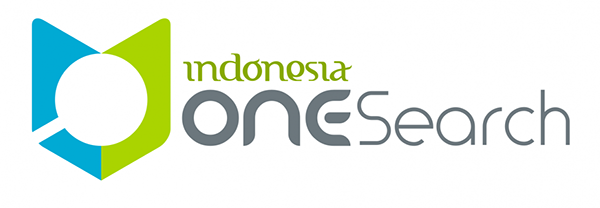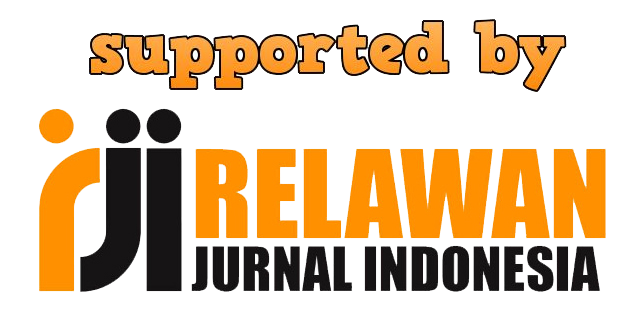Impact of COVID-19 Pandemic on Tourism Industry Sector: Conjoint Analysis to Measure Tourist Preferences in Visiting Bandung
DOI:
https://doi.org/10.23887/jish.v11i3.46935Keywords:
Tourist Preferences, Conjoint Analysis, Tourism Sector, COVID-19 PandemicAbstract
The tourism industry sector in West Java is the sector most affected since the COVID-19 pandemic. Local and foreign tourist visits to attractions in West Java Province fell by 80% due to this pandemic. The goal of this study is to determine the behavior of tourists in the future, such as the preferences of tourists to visit Bandung after the end of the pandemic. Knowing what tourist preferences are is hoped that tourism businesses will be able to develop appropriate strategies to serve tourists in the future to stimulate local economies and improve living conditions. With a sample size of 400, this study is quantitative and uses the conjoint analysis technique, the gold standard for gauging traveler preferences. The results of this study are that the next 6-12 months will be the right time to revive the image of tourism which has fallen considerably due to the pandemic situation since early 2020. As for the type of tourist tour that can be the primary choice in nature tourism, during a pandemic like now, outdoor activities are very much needed, one of which is to exercise and sunbathe. Travel time of 1-3 days is the preference of tourists who want to visit Bandung, so business people in the tourism sector should consider what types of short tours should be offered to these tourists. Meanwhile, the priority aspect of destinations that prioritize cleanliness are the primary choice for tourists to travel again after the pandemic. Concerning this priority aspect, the company can also promote cleanliness as its main priority.
References
Awan, M. I., Shamim, A., & Ahn, J. (2020). Implementing ‘cleanliness is half of faith’in re-designing tourists, experiences and salvaging the hotel industry in Malaysia during COVID-19 pandemic. Journal of Islamic Marketing, 12(3), 543-557. Retrieved from https://doi.org/10.1108/JIMA-08-2020-0229
Baharta, E., Achmad, S. H., Wulandari, A., & Marcelino, D. (2022). Tourist Preferences in Culinary during COVID-19 Pandemic in Bandung. Jurnal Kawistara, 12(1), 135-150.
Bakar, N. A., & Rosbi, S. (2020). Effect of Coronavirus disease (COVID-19) to tourism industry. International Journal of Advanced Engineering Research and Science, 7(4), 189-193. Retrieved from http://journal-repository.com/index.php/ijaers/article/view/1858
Beckman, E., & Chang, K.-L. M. (2018). Consumer Preference and Willingness to Pay for the Tourism Packages: A Conjoint Study of a Rural Destination. Business and Management Studies, 4(2), 10–16. https://doi.org/10.11114/bms.v4i2.3075
Brouder, P., Teoh, S., Salazar, N. B., Mostafanezhad, M., Pung, J. M., Lapointe, D., ... & Clausen, H. B. (2020). Reflections and discussions: tourism matters in the new normal post COVID-19. Tourism Geographies, 22(3), 735-746. Retrieved from https://doi.org/10.1080/14616688.2020.1770325
Camilleri, M. A. (2018). Travel marketing, tourism economics and the airline product: An introduction to theory and practice. In The Tourism Industry. Springer Nature. Retrieved from https://doi.org/10.1007/978-3-319-49849-2
CEIC. “Indonesia Kunjungan Wisatawan”. Published on July 03, 2020, from CEIC: www.ceicdata.com.
CNN Indonesia. (2018). “PHRI: Industri Pariwisata Jadi Sektor Idola Indonesia”. Published on September 24, 2018, from CNN Indonesia: www.cnnindonesia.com.
Ezizwita, E., & Sukma, T. (2021). Dampak Pandemi COVID-19 Terhadap Bisnis Kuliner Dan Strategi Beradaptasi di Era New Normal. Jurnal Ekonomi Dan Bisnis Dharma Andalas, 23(1), 51–63. https://doi.org/10.47233/jebd.v23i1.169
Fusté-Forné, F., & Michael, N. (2021). Limited tourism: travel bubbles for a sustainable future. Journal of Sustainable Tourism, 1-18. Retrieved from https://doi.org/10.1080/09669582.2021.1954654
Han, H., Al-Ansi, A., Chua, B. L., Tariq, B., Radic, A., & Park, S. H. (2020). The post-coronavirus world in the international tourism industry: Application of the theory of planned behavior to safer destination choices in the case of US outbound tourism. International journal of environmental research and public health, 17(18), 6485. Retrieved from https://doi.org/10.3390/ijerph17186485
Herlando, D. (2020). Kompilasi Indikator Terkini Provinsi Jawa Barat Juni 2020. Bandung: BPS Provinsi Jawa Barat.
Hoque, A., Shikha, F. A., Hasanat, M. W., Arif, I., & Hamid, A. B. A. (2020). The effect of Coronavirus (COVID-19) in the tourism industry in China. Asian Journal of Multidisciplinary Studies, 3(1), 52-58. Retrieved from https://asianjournal.org/online/index.php/ajms/article/view/213
Hung, K., Guillet, B. D., & Zhang, H. Q. (2019). Understanding Luxury Shopping Destination Preference Using Conjoint Analysis and Traditional Item-Based Measurement. Journal of Travel Research, 58(3), 411–426. https://doi.org/10.1177/0047287518760259
Jamal, T., & Budke, C. (2020). Tourism in a world with pandemics: local-global responsibility and action. Journal of Tourism Futures, 6(2), 181-188. Retrieved from https://doi.org/10.1108/JTF-02-2020-0014
Lama, R., & Rai, A. (2021). Challenges in Developing Sustainable Tourism Post COVID-19 Pandemic. In Tourism Destination Management in a Post-Pandemic Context. Emerald Publishing Limited, 233-244. Retrieved from https://doi.org/10.1108/978-1-80071-511-020211016
Malhotra, N. K. (2015). Essentials of Marketing Research: A Hands-On Orientation. England: Pearson Education Limited.
Malhotra, N. K., & Birks, D. F. (2016). Marketing Research: An Applied Approach Updated Second European Edition. England: Pearson Education Limited.
Masiero, L., & Qiu, R. T. (2018). Modeling reference experience in destination choice. Annals of Tourism Research, 72, 58-74. Retrieved from https://doi.org/10.1016/j.annals.2018.06.004
Paramita, I. B. G., & Putra, I. G. G. P. A. (2020). New Normal Bagi Pariwisata Bali di Masa Pandemi Covid 19. Jurnal Ilmiah Pariwisata Agama Dan Budaya, 5(2), 57–65. https://doi.org/10.25078/pba.v5i2.1723
Popovic, M., Kuzmanović, M., & Savić, G. (2018). A comparative empirical study of Analytic Hierarchy Process and Conjoint analysis: Literature review. Decision Making: Applications in Management and Engineering, 1(2), 153-163. Retrieved from https://doi.org/10.31181/dmame1802160p
Ramadhan, B. (2020). “Kunjungan Wisatawan di Jabar Turun Hingga 80 Persen”. Published on June 10, 2020, from REPUBLIKA: republika.co.id.
Roper, K., & Payant, R. (2014). The facility management handbook (4th ed). London: Routledge.
Sakti, G. (2019). “Siaran Pers : Pariwisata Diproyeksikan Jadi Penyumbang Devisa Terbesar Lima Tahun ke Depan”. Published on October 15, 2019, from Kementerian Pariwisata dan Ekonomi Kreatif: www.kemenparekraf.go.id.
Santoso, S. (2014). Statistik Multivariat Konsep dan Aplikasi dengan SPSS (Edisi Revisi). Jakarta: PT Elex Media Komputindo.
Shepherd, D. A., & Zacharakis, A. (2018). Conjoint analysis: A window of opportunity for entrepreneurship research. In Reflections and extensions on key papers of the first twenty-five years of advances. Emerald Publishing Limited, 20, 149-183. Retrieved from https://doi.org/10.1108/S1074-754020180000020011
Sinambela, M. (2020). “Industri Pariwisata Adaptasi Perubahan Perilaku Wisatawan di Tengah Pandemi”. Published on June 11, 2020, from Vibiz Media Network: www.vibizmedia.com.
Sovacool, B. K., Axsen, J., & Sorrell, S. (2018). Promoting novelty, rigor, and style in energy social science: towards codes of practice for appropriate methods and research design. Energy Research & Social Science, 45, 12-42. Retrieved from https://doi.org/10.1016/j.erss.2018.07.007
Sujood, H. S., & Bano, N. (2021). Behavioral Intention of Traveling in the period of COVID-19: An application of the Theory of Planned Behavior (TPB) and Perceived Risk. International Journal of Tourism Cities. Retrieved from https://doi.org/10.1108/IJTC-09-2020-0183
Taqwa, Y. (2019). “Sektor Pariwisata Mampu Tekan CAD”. Published on December, 2019, from PelakuBisnis: pelakubisnis.com.
Toubia, O. (2018). Conjoint analysis. In Handbook of Marketing Analytics. Edward Elgar Publishing. Retrieved from https://doi.org/10.4337/9781784716752
Wachyuni, S. S., & Kusumaningrum, D. A. (2020). The effect of COVID-19 pandemic: How are the future tourist behavior?. Journal of Education, Society and Behavioural Science, 33(4), 67-76. Retrieved from https://doi.org/10.9734/jesbs/2020/v33i430219
Wu, L., Zhang, J., & Fujiwara, A. (2011). Representing tourists’ heterogeneous choices of destination and travel party with an integrated latent class and nested logit model. Tourism Management, 32(6), 1407-1413. Retrieved from https://doi.org/10.1016/j.tourman.2011.01.017
Zikmund, W. G., Babin, B. J., Carr, J. C., & Griffin, M. (2010). Business Research Methods, Eight Edition. Canada: South Western Cengage Learning.
Downloads
Published
Issue
Section
License
Copyright (c) 2022 Dendi Gusnadi, Bethani Suryawardani, Astri Wulandari, Dandy Marcelino

This work is licensed under a Creative Commons Attribution-ShareAlike 4.0 International License.
Authors who publish with the Jurnal Ilmu Sosial dan Humaniora agree to the following terms:
- Authors retain copyright and grant the journal the right of first publication with the work simultaneously licensed under a Creative Commons Attribution License (CC BY-SA 4.0) that allows others to share the work with an acknowledgment of the work's authorship and initial publication in this journal.
- Authors are able to enter into separate, additional contractual arrangements for the non-exclusive distribution of the journal's published version of the work (e.g., post it to an institutional repository or publish it in a book), with an acknowledgment of its initial publication in this journal.
- Authors are permitted and encouraged to post their work online (e.g., in institutional repositories or on their website) prior to and during the submission process, as it can lead to productive exchanges, as well as earlier and greater citation of published work. (See The Effect of Open Access)


.png)
.png)













